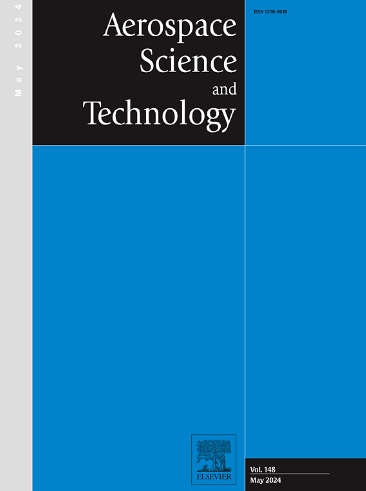Experimental investigation into the influence of strut and pulsed injection on flame stabilization in a kerosene-fueled scramjet
IF 5
1区 工程技术
Q1 ENGINEERING, AEROSPACE
引用次数: 0
Abstract
To study the influence of strut and pulsed injection on flame stabilization in a kerosene-fueled scramjet, experiments have been carried out at the China Aerodynamics Research and Development Center. Wall pressure measurements, high-speed photography, and CH* luminosity imaging have been used to investigate the flow structure and flame development under different injection modes. The results of the experiments indicate that pilot hydrogen plays a significant role in igniting and stabilizing the kerosene flame for the configuration and incoming conditions considered in this paper. Withdrawal of the pilot hydrogen leads to the pressure of the monitoring point decreasing by more than 0.07 MPa at the combustion stage in all cases. Under pulsed injection, the flame oscillates due to the instability of the kerosene pulse pressure, the concentration upstream of the shear layer is significantly reduced, the CH* luminosity distribution becomes wider, and the pressure in the isolator is reduced by about 0.035 MPa. Strut injection increases combustor pressure by about 0.016 MPa, which is conducive to kerosene ignition and flame stabilization. Combining struts with pulsed injection results in a maximum combustor pressure of up to 0.2 MPa during the flame stabilization stage, which is significantly higher than with other injection modes.
求助全文
约1分钟内获得全文
求助全文
来源期刊

Aerospace Science and Technology
工程技术-工程:宇航
CiteScore
10.30
自引率
28.60%
发文量
654
审稿时长
54 days
期刊介绍:
Aerospace Science and Technology publishes articles of outstanding scientific quality. Each article is reviewed by two referees. The journal welcomes papers from a wide range of countries. This journal publishes original papers, review articles and short communications related to all fields of aerospace research, fundamental and applied, potential applications of which are clearly related to:
• The design and the manufacture of aircraft, helicopters, missiles, launchers and satellites
• The control of their environment
• The study of various systems they are involved in, as supports or as targets.
Authors are invited to submit papers on new advances in the following topics to aerospace applications:
• Fluid dynamics
• Energetics and propulsion
• Materials and structures
• Flight mechanics
• Navigation, guidance and control
• Acoustics
• Optics
• Electromagnetism and radar
• Signal and image processing
• Information processing
• Data fusion
• Decision aid
• Human behaviour
• Robotics and intelligent systems
• Complex system engineering.
Etc.
 求助内容:
求助内容: 应助结果提醒方式:
应助结果提醒方式:


